Misión El Descanso
Mission El Descanso (Misión San Miguel la Nueva) was founded in 1817 among the Kumeyaay by Dominican missionary Tomás de Ahumada at a site 22 kilometers south of the present-day city of Rosarito, Baja California, Mexico.
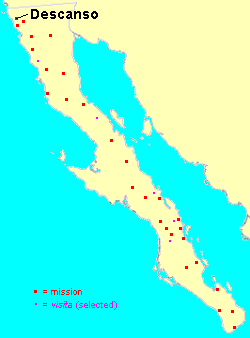
It was the next-to-last mission founded by the Dominicans, and the farthest north. Today only stone foundations and ruined adobe walls survive.
History
Because Mission San Miguel, 13 kilometers to the south, was frequently flooded by the Río Guadalupe, Ahumada sought another site on higher ground for El Descanso. Additional advantages of the northerly location were good grazing and plentiful arable land.
In 1830, Father Félix Caballero constructed an adobe church here and managed both missions from El Descanso, but in 1834, it ceased to function as a mission. At the time it had a population of just 254, including those from Mission San Miguel. By 1853 the mission was deserted.
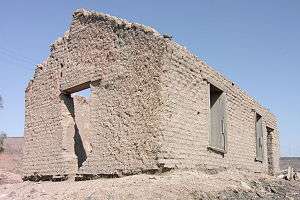
Due to its proximity to the Pacific Ocean, El Descanso had been involved in a maritime commerce with ships that traveled along its shores in search of merchandise such as otter fur, salt, tallow, vegetables, and grain.
Mission complex
The church, the sacristy, and the missionary rooms were the main structures and formed a square. Several kilometers upstream there was a garden, a winery, and orchards. The irrigation system, which used a reservoir and gravity to take the water in acequias into the fields, was typical for missions of this sort. Protection may have been provided by a small fort, located on a hill to the south where the old cemetery is located.
Construction
The buildings were made of adobe, with round foundations set at a depth of 80 centimeters and cemented with a mortar of clay, sand, and lime.
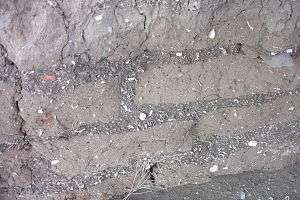
The adobe bricks resting on the foundation were cemented with the same mixture and placed in an alternating fashion to give the walls more strength and stability. The walls were from 0.90-1.10 meters thick. The adobe was made with local soil, water, clay, and sand; unlike the other missionary complexes of the area, these were mixed with pebbles and crushed shells instead of the usual straw, to make the material tougher.
The walls probably reached a height of 4.50 meters. The roofs were interlaced with rush branches over oak beams, and the floors were made of adobe tile.
Location and natural habitat
The ruins of this mission are situated in El Descanso Valley, on the banks of an arroyo of the same name, which ends in a small estuary. In front of this are large coastal dunes formed by strong winds from the sea that have blown the sand there.
The missionaries discovered a mild, humid climate and fertile land in this region, with the characteristic vegetation of coastal shrubs such as rush, watercress, purslane, cattail, mustard, mangrove, grease wood, coastal live oaks, manzanita, yucca, honey mesquite, red willow, cholla, and goat nut.
Animals that inhabited the region included red fox, badger, skunk, coyote, deer, cougar, bobcat, hare, rabbit, squirrel, California quail, rattlesnake, several water snakes, and lizards.
Since the sea was nearby, the sea provided other sources of food, including lobster, abalone, clam, mussel, octopus, sea bass, tuna, small sharks, rays, and sardine.
The agricultural production was favored by the humid climate, allowing the cultivation of wheat, barley, and corn, as well as a diversity of fruits and vegetables.
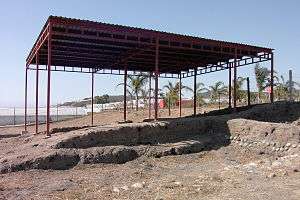
The orchard and vineyard were located in the eastern portion of the valley. Animals kept included cattle, sheep, goats, horses, and mules.
Conservation
Efforts to preserve and study the remaining traces of Mission El Descanso have been implemented under the auspices of Mexico's National Institute of Anthropology and History (INAH). A provisional metal covering was installed to protect the remaining adobe tile floors, adobe walls, and foundations from the elements. Exploratory archaeological excavations were also made at the site in 1997.
El Descanso Church
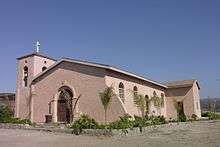
The El Descanso Church, a new Mission Revival Style Church, was built on the site of the 1830 Dominican Misión El Descanso, south of the present-day city of Rosarito, in Baja California, Mexico.
References
- Meigs, Peveril, III. 1935. The Dominican Mission Frontier of Lower California. University of California Publications in Geography No. 7. Berkeley.
- Vernon, Edward W. 2002. Las Misiones Antiguas: The Spanish Missions of Baja California, 1683-1855. Viejo Press, Santa Barbara, California.
- Kier, David. 2016. Baja California Land of Missions
M&E BOOKS, El Cajon, California.